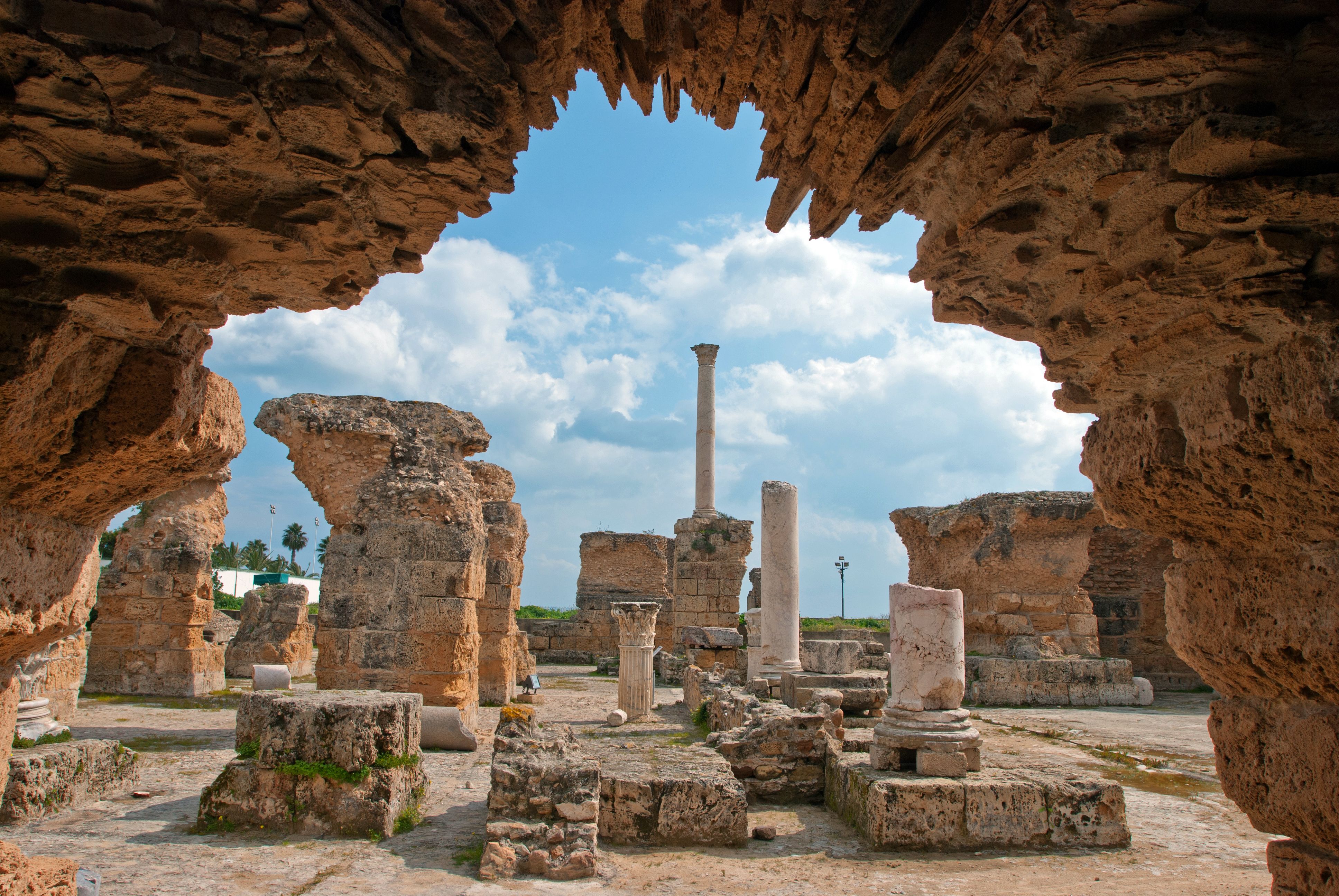



Carthage, a seaside suburb of Tunisia’s capital, Tunis, is known for its ancient archaeological sites. Founded by the Phoenicians in the first millennium B.C., it was once the seat of the powerful Carthaginian (Punic) Empire, which fell to Rome in the 2nd century B.C. Today it retains a scattered collection of ancient baths, theaters, villas and other ruins, many with sweeping views of the Gulf of Tunis
The best time to visit Carthage is during the spring and fall seasons:
Weather: Mild and sunny, ~18–25°C (64–77°F)
Why go: Perfect for exploring ruins, wildflowers bloom, fewer crowds
Events: International Carthage Marathon (March), spring cultural festivals
Weather: Warm but comfortable, ~20–28°C (68–82°F)
Why go: Sea is still warm for swimming, fewer tourists, beautiful sunsets
Events: Carthage Film Festival (October/November)
July–August: Very hot (30–40°C / 86–104°F), high humidity, and crowded
Winter (Dec–Feb): Cooler (~10–17°C / 50–63°F), rainy days and shorter daylight
From Tunis:
By Train: Take the TGM light rail (Tunis–Goulette–Marsa), around 30 minutes from downtown Tunis.
By Taxi: 15–20 minutes from central Tunis.
Byrsa Hill & Acropolium:
Offers panoramic views and houses ruins of Punic and Roman Carthage.
Acropolium is a former cathedral now used for concerts.
Carthage National Museum:
Contains ancient artifacts, sculptures, and mosaics.
Antonine Baths:
One of the largest Roman bath complexes in Africa, set right on the Mediterranean coast.
Tophet of Carthage:
A sacred site with urns and tombstones, tied to Phoenician child sacrifice rituals (debated by historians).
Roman Amphitheater:
Once held 35,000 spectators. Partially restored.
Punic Ports:
Man-made circular harbor used by Carthaginian navy.
Magon Quarter:
Remains of residential areas near the coast.
Walk the archaeological circuit of Carthage (multiple ruins in walking distance)
Visit Sidi Bou Said, just a stop away on the TGM line
Watch the sunset from Byrsa Hill
Pack a picnic and enjoy the Mediterranean breeze by the Antonine Baths
Entry to multiple Carthage sites with a combined ticket (~12 TND)
Wear comfortable shoes—some terrain is uneven
Go early or late in the day to avoid heat
Bring water and a hat—limited shade
Carthage itself is mostly residential, but nearby Sidi Bou Said, La Marsa, and Gammarth offer excellent options:
Villa Didon Carthage – Modern 5-star hotel with panoramic views over ancient ruins and the Gulf of Tunis.
The Residence Tunis (Gammarth) – Spa resort with private beach, golf, and gourmet dining.
Dar Said (Sidi Bou Said) – Beautiful traditional-style boutique hotel with garden and pool.
Dar El Marsa (La Marsa) – Elegant seafront hotel with rooftop pool and modern rooms.
Maison d’Hôtes Dar Marsa Cubes (La Marsa) – Artistic, cozy guesthouse.
Hostel El Medina (Tunis Medina) – If you're open to staying slightly farther away, this is a solid budget choice.
Le Golfe (La Marsa) – Elegant Mediterranean cuisine with ocean views. Great seafood.
Dar Zarrouk (Sidi Bou Said) – High-end Tunisian dishes with romantic sunset views.
Villa Didon Restaurant – Stylish fusion menu, ideal for dinner with a view of Byrsa Hill.
Restaurant Le Pirate (Gammarth) – Known for fresh fish and scenic setting.
El Abed (La Goulette) – Casual but iconic for authentic Brik and Couscous.
Couscous with lamb or fish
Brik – Thin pastry stuffed with egg and tuna
Lablabi – Spicy chickpea soup
Mechouia salad – Grilled pepper salad
Makroud – Date-filled semolina pastry (dessert)
Predominantly Muslim population
Arabic is the official language; French is widely spoken
Locals are generally warm and welcoming
Dress modestly, especially when visiting mosques or historical sites
Greet with “Salam” or “Bonjour”
It’s polite to accept offers of tea or small talk when shopping or meeting locals
Carthage International Festival (July/August) – Live music and performances held in the Roman amphitheater
Strong traditions in handicrafts, ceramics, and mosaics
The area blends Phoenician, Roman, Islamic, and French heritage